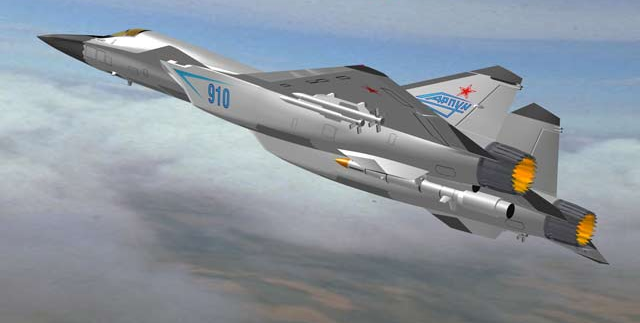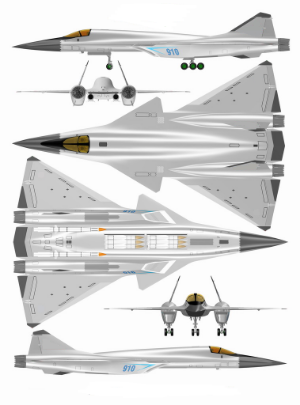F-30 Reaper Multirole Interceptor [MT: ZDI]
Present all orders to the Corporate Home and do not post in this thread. Failure to do such will result in negligence of the order. Thank You.
Z.D.I. F-30 Reaper Multirole Interceptor
Stealth coming into interception. Resurrection of High-Speed Interception.
Stealth coming into interception. Resurrection of High-Speed Interception.
UNIT COST: $300,000,000 (F-30A), $300,000,000 (F-30B)
DPR: $51,000,000,000
DPR: $51,000,000,000
The Zeus Defense Industries F-30 Reaper is a multirole, twin-engine, supersonic interceptor made to replace MiG-31 'Foxhounds' in service of air forces around the world. Commencing development in the early 1990's, the F-30 Reaper is one of the first aircraft from Zeus Defense Industries that was built without procurement from the Greater Eastern Imperium Defense Forces guaranteed.
Slightly larger than the MiG-31 it is intended to replace, the F-30 brings large emphasis to stealth, speed and early target identification, making it appropriate for long-range, high-speed interception against bombers, AEW&C aircraft and even, to a limited degree, incoming enemy fighters. However, unlike the MiG-31, the F-30 Reaper is a 'multirole interceptor': in other words, when it is not assigned for interception, it can carry out high-speed strike roles as well. Of course, it should be outlined that such is a secondary role: the primary role of the F-30 remains to be high-speed interception.
Its large weapons bay enables the
History
Zeus Defense Industries began the development of the F-30 Reaper in 1999, when they saw the market of high-speed interceptors and their merits against large aircraft, such as AEW&C, JSTARS, MPA's and other aircraft of large strategic value. They laid out the concepts of an aircraft, which held high-speed interception as its primary role and a secondary role of rapid strike. The result of such development was the F-30 Reaper, which first flew in 2006. It was once considered as one of the candidates for the Greater Eastern Imperium Air Force's requirement for tactical platforms, but due to new requirements, the B-5 Archer was chosen as the main candidate instead.
Characteristics
The F-30 Reaper features a delta-canard configuration - a configuration traditionally used by smaller fighters and interceptors, such as the Eurofighter Typhoon and the JA-37 Viggen. The F-30 Reaper chose such design even though it could've chosen the traditional wing-tail design, for that the delta-canard configuration had a greater rate-of-climb, more flight control surfaces and the subsequent improvement in flight control, making it suitable for high-speed air interception.
In addition, powered by the ZDI F201-400 - the same engine used on the B-5A Archer - the F-30 Reaper is capable of having enough thrust for extremely high speeds, making the maximum speed of Mach 2.98 and a cruising speed of Mach 2.4 possible. The engines are set apart, in order to keep each engine unaffected by what happens on the other engine. Of course, such high speed and such are at the expense of its poor G-loading of 4.7 and at the expense of the fact that it is not designed for air-to-air maneuvers and rapid turning.
Its large airframe enables the F-30 Reaper to be armed with a large number of air-to-air and air-to-surface weaponry. Even with the exclusion of wing pylons, the F-30 is said to be able to be equipped with up to 12 BVRAAM's for interception, or 6 ERAAM's (R-37) and 2 VLRAAM's (400km-class) - this large number of missiles, though its purpose does not lie within such, enable it to act as a missile truck for air-to-air missiles, if the missiles are able to be ripple-fired. In addition, for its air-to-surface loading, it is able to be armed with various guided munitions, supersonic cruise missiles and other weaponry: it is one of the first aircraft within Zeus Defense Industries to be capable of arming itself with at least five BrahMos-class missiles.
Continuing the philosophy of the MiG-31, the F-30 Reaper has also been equipped with sensors that enable early detection and tracking of the enemy. It uses the Rayman AN/APG-100K 'OLCR-K' (Offensive Long-Range Combat Radar-K), a scale-down version of the same AESA radar used on the B-5 Archer. Though the truth is a closely-guarded secret by Zeus Defense Industries, the AN/APG-100K is said to have a detection range of at least 500 km against 20m2 targets, while it has a 350+ km detection range against 5 m2 targets. As of the F-30A, the radar can also be used for anti-surface missions, though this is rather secondary. In addition to the AN/APG-100K, the F-30 uses several other electronics and sensors that enhance its combat capabilities and make it a multirole interceptor.
Variants
- F-30A: Standard interceptor variant. Has limited anti-surface warfare capability.
- F-30B: True multirole variant, with significant sensor upgrades.
Specifications
General Characteristics
- Crew: Two (pilot, weapons officer)
- Length: 27.21 m
- Wingspan: 14.65 m
- Height: 6.12 m
- Empty weight: 25,520 kg
- Loaded weight: 48,000 kg
- Max. takeoff weight: 55,200 kg
- Powerplant: 2 × 2 x ZDI F201-400, each delivering 27,000 lbf of dry thrust each/48,000 lbf each at max.
Performance
- Maximum speed:
- High altitude: Mach 2.98
- Low altitude: Mach 1.32
- Cruise speed: Mach 2.4
- Combat radius: 2,800 km at Mach 0.8 / 1,010 km at Mach 2.4
- Ferry range: 6,200 km
- Service ceiling: 21,000 m
- Rate of climb: 281 m/s
- Maximum g-load: 4.7 g
Armament
- Gun: 1 x M61A2 Vulcan 20 mm gun or any other 20 mm/25 mm/23 mm gun
- Air-to-Air Configuration (wing loading not included)
- 8 x BVRAAM (Meteor, AMRAAM) + 4 x BVRAAM or
- 6 x ERAAM (R-37-class) + 2 x VLRAAM (400km-class)
- Air-to-Surface Configuration: Various guided bombs and cruise missiles.

